
Veterinary Readiness Activity, Fort Belvoir nips it in the bud, puts the “surge” in surgery
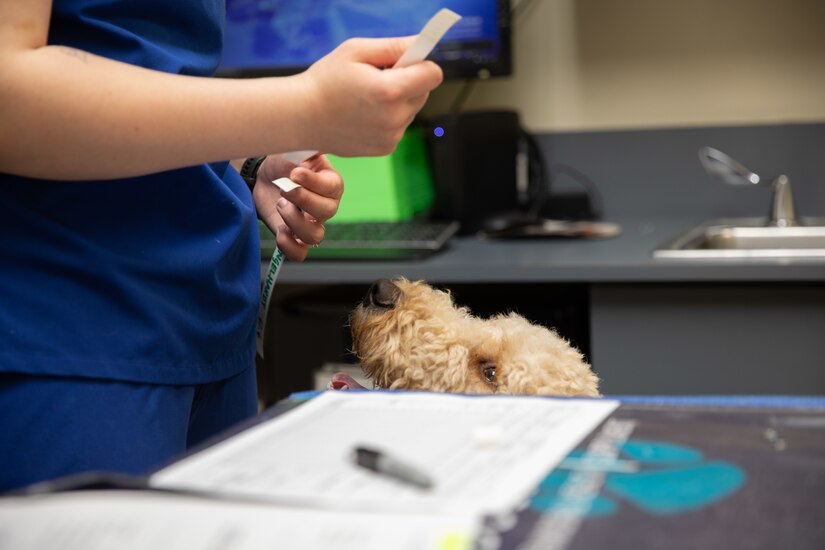
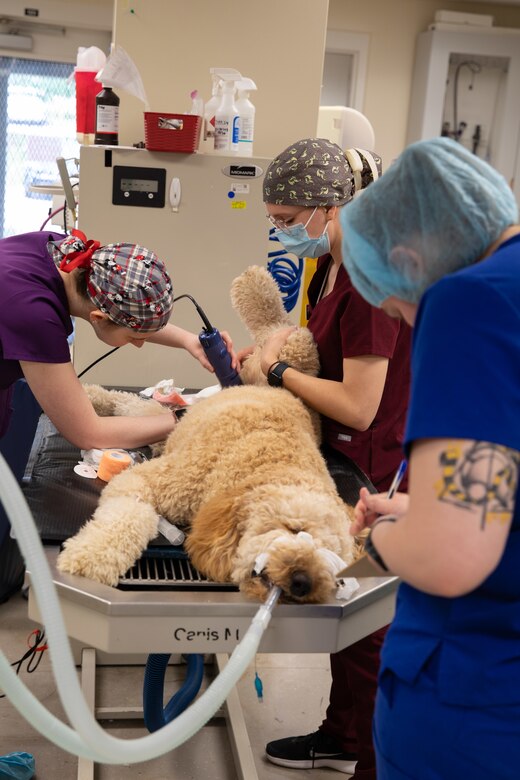
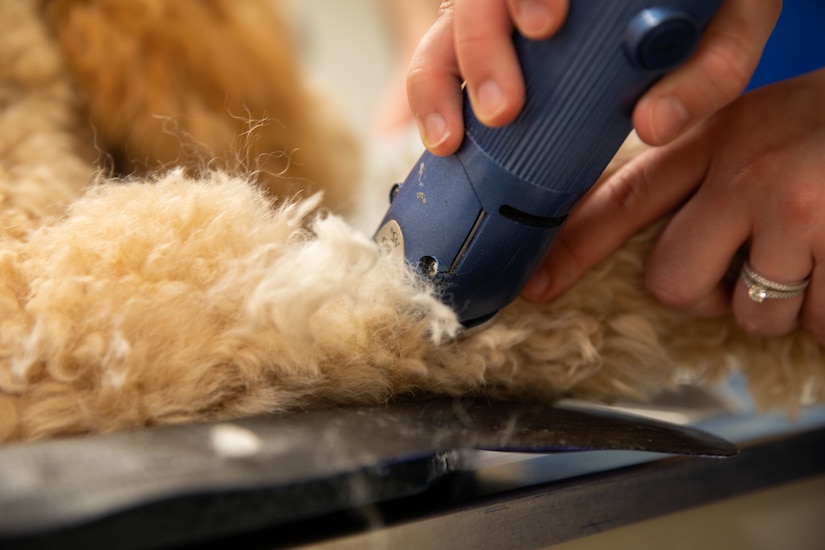
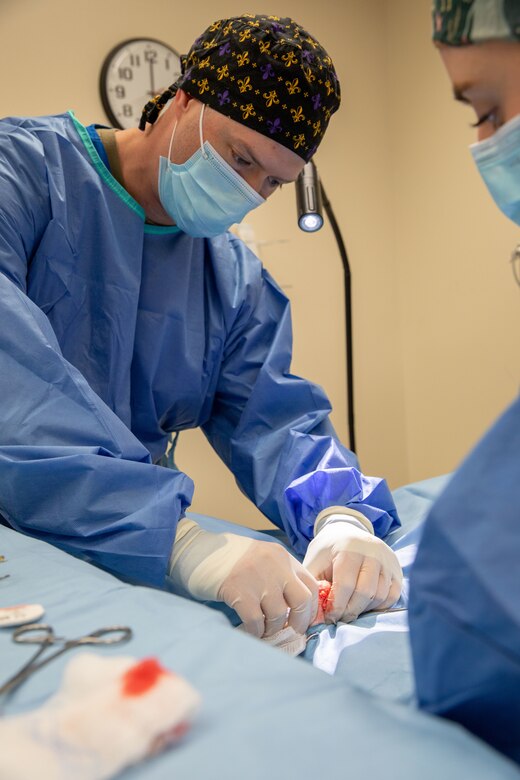
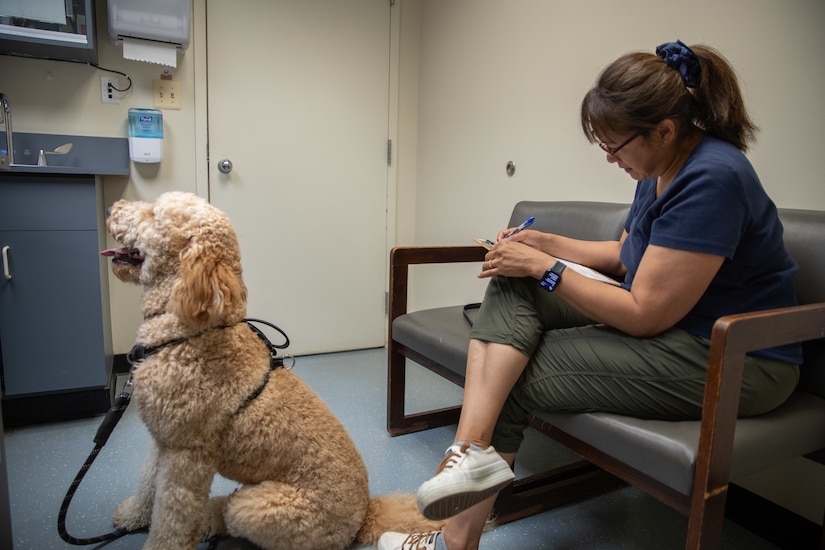
Charlie awoke and, by all accounts, had lost the use of his legs.
Laying on the floor, Spc. Madison Gilmore reassured him, pleading with him to take just a few steps. Immobilized and unable to speak, Charlie closed his eyes.
“You’re not going back to sleep,” Gilmore said, brushing his curly hair back.
Just a few hours earlier, Charlie walked into the center completely fine. Now, only minutes post-surgery, the 8-month-old goldendoodle decided he was going to enjoy the attention while he had it, lying on the floor with both legs stretched out to his sides.
But Gilmore, an animal care specialist, said it wouldn’t last long.
“The faster he gets moving and the more he is mobile, his body is able to get rid of the anesthetic agent we used,” she explained.
On any other day at the Fort Belvoir Veterinary Center, noncompliance would be just another challenge for the staff to deal with. Today, Charlie’s silent protest came at a time when the clinic was already being pushed to capacity.
The VETCEN was one of three sites taking part in Veterinary Readiness Activity, Fort Belvoir’s annual training exercise. Its goal is to validate the organization’s ability to surge in response to a hypothetical scenario where a sudden influx of military working dogs require medical attention.
To create that environment, VRAFB ceased normal operations, which typically consists of routine wellness visits and vaccinations, for the week. Instead, they planned up to 20 spay and neuter operations per site for pets of active-duty service members and retirees.
Charlie’s owner, Beth Engelhardt, who volunteers at the Fort Belvoir Chapel, said she and her retired Navy husband had been looking for a veterinarian to perform the operation. She saw a post on the Fort Belvoir Facebook page promoting the spay and neuter clinic and the timing was just right.
“I have a veterinarian and when I asked for an estimate, they said it was going to cost about $1300,” she said. “[Fort Belvoir] said it was probably going to be between $400-500.”
“I said ‘whoa’ it’s not a matter of a hundred dollars, I’m saving so much more.”
The exercise also allowed the center to address another common concern: appointment availability.
Typically, the center can only do between two and four operations a week. Partly due to staffing, but also because of their operational requirements within the National Capital Region.
U.S. Army Capt. Madison Bartosh, the lead veterinarian for Charlie’s surgery, said the patient population in the NCR is the biggest difference between here and anywhere else.
“This area is very unique in the fact we have so many military working dogs,” she said. “They’re major athletes.”
In addition to Army military working dogs, VRAFB also routinely sees working dogs from every other military branch, U.S. Secret Service, Federal Bureau of Investigations, Transportation Security Administration, Pentagon Force Protection Agency, U.S. Capitol Police, Amtrak Police Department, and other federal agencies in the region.
In fact, if you’ve ever seen a working dog around the National Capital Region, there’s a good chance Dr. Bartosh has too.
“Most of the dogs are pretty healthy; it’s mainly their annual wellness visits we see them for,” Bartosh said.
Urgent care visits happen more before and during major events around the capital, when working dogs are more likely to experience a laceration or soft-tissue injury.
“The worst thing is a fracture or something that needs surgery,” she said. “It’s even harder when it’s a dog and they can’t tell you where it’s hurting, so you’re completely going based off of what you feel and what you’re seeing.”
Another veterinarian assisting in Charlie’s surgery, U.S. Army Capt. Jordan Judice, said he’s seen a variety of mission-related injuries in their working dog population.
“I’ve seen a dog rip their paw pad off searching chain link fences and broken toes getting caught on grates,” he said. “We’re going to be doing more stuff like that, but you really can’t mimic that without it happening.”
“This exercise is getting us our surgical touches and helps us with patient-handling, getting in the flow with pre-meds, pre-oxygenate, intubate, clean the site, and perform the operation.”
This capability makes these veterinarians such a critical component of the Joint Task Force-National Capital Region mission. Sharpening that capability is why their training exercises are valuable, which is helpful for Charlie.
“The goal is to mimic that increase of a surgical need in military working dogs,” said U.S. Army Capt. Chelsea Payne, veterinarian and officer in charge of the Fort Belvoir VETCEN. “In those events, we also know we’re likely to pull our people from other facilities to give us the manning we need.”
Without additional support from Soldiers like Spc. Madison Gilmore, an animal care specialist normally assigned to the Fort Meade Veterinary Treatment Facility in Maryland, Belvoir’s clinic wouldn’t have been able to perform as many spay and neuter operations.
“I think it’s always great to have exercises where you’re having to work with people and be successful and efficient.” Bartosh said. “It allows us to do something we don’t get to do every day and work with people we don’t normally work with.”
Bartosh said Charlie’s operation was the first time she’d performed surgery with Gilmore, Judice, Payne, and Ms. Andrea Varidakis-Broyles, a licensed veterinary technician with the American Red Cross.
According to Bartosh, that didn’t impact Charlie’s outcome.
“Gorgeous!” she announced in the operating room after the final stitch was closed.
“Charlie did great,” she said. “He was a good patient.”
While Charlie was unavailable for comment after the procedure, his owner Beth verified his rebellious nature to Spc. Gilmore at pick up.
“Talking to his mom, he is lazy,” Gilmore said. “He kind of splats on the ground, which he was doing the whole day.”
“So, it’s kind of Charlie’s personality, I guess.”